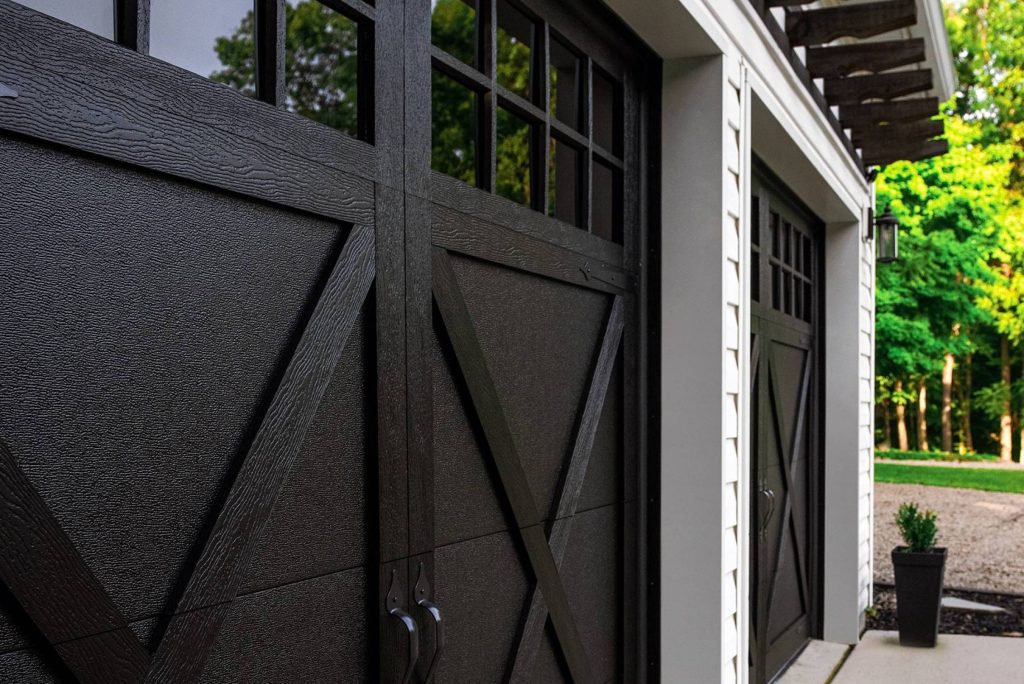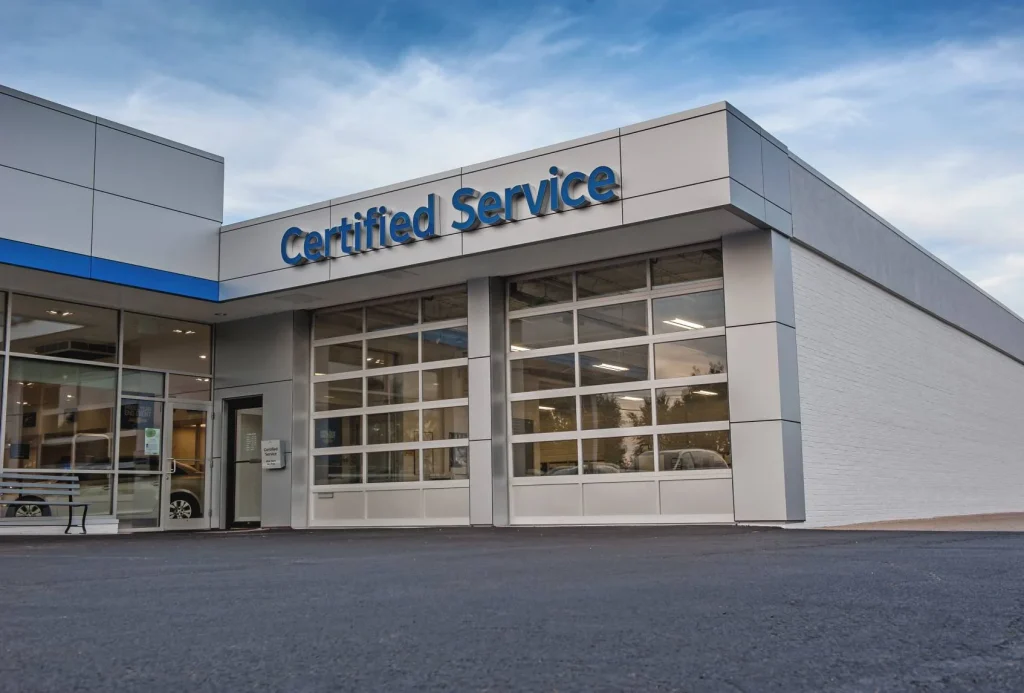Broken Garage Door in Center Line, MI
Reliable Solutions for a Safe and Secure Entry
Locally Based, Regionally Trusted
Since 2017
Schedule A Service Request
We Serve Businesses In And Around The Following Cities:
About Broken Garage Doors
Comprehensive Guide to Broken Garage Door Solutions for Commercial Properties in Center Line
Understanding the Importance of a Functioning Garage Door
In the bustling city of Center Line, commercial properties rely heavily on garage doors for both security and operational efficiency. From warehouses filled with inventory to local businesses handling routine deliveries, a garage door is more than just a convenience—it's a critical component of daily operations. When a broken garage door disrupts this seamless flow, it poses significant challenges to security and workflow.
Consider a scenario wherein a local Center Line distribution center experiences a broken garage door. Not only does this impede immediate access to goods and transport vehicles, but it also poses a risk to business security. Moreover, the broken door might cause delays, impacting client satisfaction and potentially incurring financial losses. Understanding the intricacies of such a scenario highlights the critical need for timely and effective solutions.
Identifying Common Issues with Commercial Garage Doors
Identifying problems early in commercial garage doors can prevent costly repairs and downtime. The most common issues include broken garage door cables, the cost to fix broken garage door springs, and problems with the garage door opener springs. Each presents unique challenges and requires specific solutions.
A broken garage door cable, for example, can happen due to wear and tear, leading to imbalance and malfunction. Similarly, issues like a garage door spring broken put strain on the opener mechanism, further aggravating the problem. Recognizing these common issues helps businesses in Center Line address them before they escalate.
The Critical Role of Garage Door Springs
Garage door springs bear the weight of the door and ensure smooth operation. They can face substantial wear, particularly in a commercial setup where the volume of operation is high. The breakage of these springs often leads to the dreaded scenario where the door won’t open or close. Understanding the garage door repair cost for broken springs is crucial for planning and budget allocation.
Springs come in two main forms: torsion and extension. While torsion springs are commonly utilized in commercial settings due to their durability and superior performance, both types require regular inspection and timely maintenance to prevent breakage. When a commercial garage door spring breaks, it not only halts operations but also creates safety hazards for employees.
Why Regular Maintenance is Essential
To avoid the pitfalls of a broken garage door in Center Line's competitive commercial environment, regular maintenance stands paramount. Maintenance prevents minor issues from becoming major disruptions and extends the lifespan of the door system. A regular check-up can identify wear on cables, stress on springs, and potential opener complications.
By partnering with reputable services such as D&J Contracting, businesses can schedule routine inspections and maintenance. This proactive approach avoids the major headaches associated with unexpected failures, saving both time and money. Proper maintenance thereby ensures a smooth operation and minimizes repair costs associated with unexpected spring breakage or cable failures.
Calculating the Costs of Repair
The cost of repairs can be a point of concern for businesses dealing with a broken garage door. Understanding these costs helps in financial planning and decision-making. The cost to fix a broken garage door spring, for example, varies depending on factors like the type of spring and the complexity of the repair.
A detailed assessment allows for accurate cost estimations, providing businesses in Center Line with clarity and control over their budgets. Companies like D&J Contracting offer detailed breakdowns of potential repair costs, ensuring transparency and easing financial concerns for business owners who may already be dealing with operational disruptions.
Choosing the Right Service for Repairs
Selecting the right contractor for garage door repairs can make a significant difference in efficiency and cost-effectiveness. In Center Line, businesses have access to expert services like D&J Contracting, known for their professionalism and reliability. Choosing a local provider has several advantages, including quick response times and an in-depth understanding of specific local needs and conditions.
An experienced contractor will efficiently address issues like broken garage door cables or worn-out springs, offering solutions that are both immediate and lasting. Their expertise ensures the operations will resume swiftly, minimizing the potential downtime and maintaining the business's competitive edge.
Real-World Applications and Benefits
The real-world applications of a well-maintained and swiftly repaired garage door are vast for commercial entities. Consider a local Center Line logistics firm that relies on its garage doors for loading and unloading deliveries several times a day. A broken door in this context doesn't just halt deliveries; it creates a backlog affecting clients and operations. Timely repairs ensure continuity, securing the firm's reputation and customer satisfaction.
Furthermore, businesses benefit from reduced liability risks. A malfunctioning garage door poses safety hazards to employees and clients alike. Repairs and regular maintenance safeguard against such risks, promoting a safer work environment. The benefits are thus not only operational and financial but also conform to safety compliances and enhance the company's public image.
Improving Efficiency Through Technology Integration
Modern commercial properties are increasingly integrating smart technology with their garage door systems. These advancements allow for remote monitoring and operation, early detection of issues like garage door spring breakage, and convenient scheduling of maintenance and repairs. Integrating such technologies represents a substantial investment in efficiency and future-proofing.
For businesses in Center Line adopting these technologies creates a competitive advantage, allowing for quicker resolutions conducted by entrusted partners like D&J Contracting. This synergy between technology and expert service provision amplifies operational efficiency and minimizes disruptions further benefiting the bottom line.
Guiding to Action Through Strategic Partnerships
Recognizing the critical nature of garage doors in day-to-day commercial operations, businesses should cultivate partnerships with reliable repair providers. In an ever-evolving urban landscape like Center Line, these partnerships offer both stability and agility. Collaborating with established contractors ensures access to skilled expertise when trouble arises, thereby securing operational integrity.
Astute business owners will readily identify the firm link between operational uptime and competitive viability. By integrating regular maintenance and harnessing the expertise of contractors like D&J Contracting, businesses solidify their operational fortitude, ensuring seamless service delivery to their own clients, and sustaining essential business performance.
Though the challenges of a broken garage door can seem daunting, proactive management and strategic partnerships transform potential setbacks into manageable facets of daily operations—effectively keeping your business moving forward without a hitch.
Broken Garage Doors Gallery



Call Us Today to receive your Free Quote for Broken Garage Door in Center Line
Serving: Center Line, Michigan

About Center Line, Michigan
Historically, the land that Center Line came to occupy was swamp and wilderness until the early nineteenth century. As land became scarce, French, German, Belgian, and Irish immigrants began clearing the forests and draining the swamps. Center Line was known as "Kunrod's Corner" during the mid-nineteenth century. The theory is that the French named it "Center Line" because it was the middle of three Potawatomi trails from Fort Detroit to northern trading posts. The "center line" was the trail used from Detroit to Utica. The community received its initial start when Catholics decided to build a church so that they would not have to walk to St. Mary's in Detroit for Sunday Mass. This church (St. Clement's) was established in 1854 and attracted more Catholic settlers into the area. In 1863, the first general store was constructed by Joeseph Buechel. On July 19, 1878, Hieronymous Engelmann was the first postmaster, and he was succeeded in 1885 by Sophia Buechel. The "Centre Line" post office closed on July 31, 1906, and the name was restored to Center Line thereafter. In this era, street car tracks connected Detroit to Center Line along Van Dyke Road, and Ten Mile Road was the final stop of the street car. The village was incorporated in 1925 in the center of Warren Township, which is now the city of Warren, and was incorporated as a city in 1936.
Center Line is in southwestern Macomb County and is surrounded entirely by the city of Warren. It is 11 miles (18 km) north of downtown Detroit, 7 miles (11 km) west of St. Clair Shores, 6 miles (10 km) east of Royal Oak, and 11 miles (18 km) south of Utica. Interstate 696 runs along the northern edge of Center Line, with access from Exits 22 through 24. Highway M-53 (Van Dyke Avenue) runs north-south through the center of town, connecting Detroit and Utica.
According to the U.S. Census Bureau, the city of Center Line has a total area of 1.75 square miles (4.53 km), all land.
| Census | Pop. | Note | %± |
|---|---|---|---|
| 1930 | 2,604 | — | |
| 1940 | 3,198 | 22.8% | |
| 1950 | 7,659 | 139.5% | |
| 1960 | 10,164 | 32.7% | |
| 1970 | 10,379 | 2.1% | |
| 1980 | 9,293 | −10.5% | |
| 1990 | 9,026 | −2.9% | |
| 2000 | 8,531 | −5.5% | |
| 2010 | 8,257 | −3.2% | |
| 2020 | 8,552 | 3.6% | |
| 2023 (est.) | 8,354 | −2.3% | |
| U.S. Decennial Census | |||
As of the census of 2010, there were 8,257 people, 3,632 households, and 1,988 families residing in the city. The population density was 4,745.4 inhabitants per square mile (1,832.2/km). There were 3,920 housing units at an average density of 2,252.9 per square mile (869.8/km). The racial makeup of the city was 82.5% White, 12.0% African American, 0.4% Native American, 2.5% Asian, 0.1% from other races, and 2.5% from two or more races. Hispanic or Latino of any race were 1.7% of the population.
There were 3,632 households, of which 27.7% had children under the age of 18 living with them, 32.0% were married couples living together, 17.5% had a female householder with no husband present, 5.2% had a male householder with no wife present, and 45.3% were non-families. 40.2% of all households were made up of individuals, and 18.1% had someone living alone who was 65 years of age or older. The average household size was 2.22 and the average family size was 3.01.
The median age in the city was 41.2 years. 21.4% of residents were under the age of 18; 8.2% were between the ages of 18 and 24; 25.1% were from 25 to 44; 27.5% were from 45 to 64; and 17.7% were 65 years of age or older. The gender makeup of the city was 46.1% male and 53.9% female.
85.9% of residents 25 or older hold a high school degree. 10.8% of residents 25 or older hold a bachelor's degree or higher. Median household income was $30,752. 21.3% of the population lives below the federal poverty line.
As of the census of 2000, there were 8,531 people, 3,821 households, and 2,074 families residing in the city. The population density was 4,912.6 inhabitants per square mile (1,896.8/km). There were 3,916 housing units at an average density of 2,255.0 per square mile (870.7/km). The racial makeup of the city was 93.82% White, 3.09% African American, 0.25% Native American, 1.01% Asian, 0.26% from other races, and 1.57% from two or more races. Hispanic or Latino of any race were 1.51% of the population.
There were 3,821 households, out of which 24.2% had children under the age of 18 living with them, 36.8% were married couples living together, 13.7% had a female householder with no husband present, and 45.7% were non-families. 40.9% of all households were made up of individuals, and 22.5% had someone living alone who was 65 years of age or older. The average household size was 2.18 and the average family size was 2.99.
In the city, the population was spread out, with 21.8% under the age of 18, 6.9% from 18 to 24, 28.5% from 25 to 44, 20.5% from 45 to 64, and 22.4% who were 65 years of age or older. The median age was 40 years. For every 100 females, there were 81.5 males. For every 100 females age 18 and over, there were 75.5 males.
The median income for a household in the city was $31,677, and the median income for a family was $47,241. Males had a median income of $39,947 versus $26,487 for females. The per capita income for the city was $19,066. About 10.6% of families and 13.3% of the population were below the poverty line, including 17.9% of those under age 18 and 14.4% of those age 65 or over.
Most Center Line residents are zoned to schools in Center Line Public Schools, including Center Line High School. A small portion of the city is in Van Dyke Public Schools, served by Lincoln High School.
St. Clement Catholic School, of the Roman Catholic Archdiocese of Detroit, was in Center Line. It was established in 1857. It had 110 students in the 2009-2010 year, and then 12 teachers and 89 students in its final year, 2010-2011. The parish decided to close the school as a parish takes a greater share of the costs if the number of students is under 100.
The archdiocese operated St. Clement High School in Center Line. It closed in 2005. Macomb Christian Schools (MCS) occupied the old St. Clement High School building from 2017 until 2019, when MCS shutdown.
